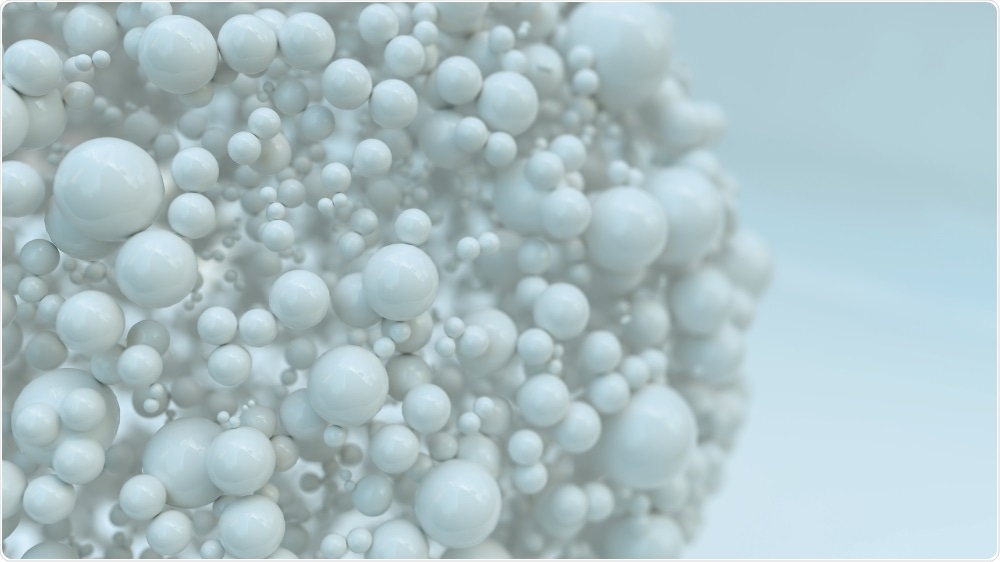Researchers from Kazan Federal University published an article in the Journal of Nanoparticle Research that represents the transmission electron microscopy (TEM) and flow cytometry study of A-549 (human lung carcinoma) cellular uptake of Pr3+:LaF3 nanoparticles. The Pr3+:LaF3 nanoparticles are potential platforms for cell nano-sensors.

Nanoparticles. Image Credit: Crevis/Shutterstock.com
The research was directed toward analyzing the influence of nanoparticle morphology (nanospheres and nanoplates) on cytotoxicity and the dynamics of cellular uptake.
The flow cytometry technique allows the cells to pass through a small tube (as a flow), where the cells are then irradiated by a laser.
When cells scatter the laser light, the scattering efficiency can provide vital data about processes within the cell. TEM method permits cell visualization with 0.2 nm (10–9 m) spatial resolution.
The nanospheres and nanoplates are readily internalized by A-549 cells through macropinocytosis after 2, 10, and 24 hours of nanoparticle exposure. The nanoparticles were not found in cell nuclei or other organelles. At the time of macropinocytosis, relatively huge vesicles (0.2–5 μm) are created.
From the flow cytometry experiments, it was found that the internalized nanoparticles increase the optical inhomogeneity of the cells, which results in a side scattered light intensity increase of ~10% without any dynamics during 24 hours (for both morphotypes of nanoparticles).
Presumably, it is accounted for by the fact that macropinocytosis is a dynamic process, and certain macropinosomes appear and move in the cytoplasm. However, other macropinosomes move back to the membrane’s cell surface and release the content to the extracellular space, resulting in equilibrium.
Lastly, nanospheres and nanoplates are less toxic and are easily internalized by cells. These details lead the path toward developing nano-sensors for cells.
The luminescence of Pr3+:LaF3 nanoparticles (spectral shape) is based on the temperature in the physiological temperature range (20 °C to 60 °C). This fact, along with the nanosized dimensionality of Pr3+:LaF3, leads the way toward temperature sensing at the cellular level with a spatial resolution of >1 μm. Similar temperature sensors are vital in pharmaceuticals and fundamental biology.
The sensors enable studying thermodynamic cell responses on external factors (drugs and physical conditions). These data are very vital for pre-clinical studies of drugs.
The researchers further intend to offer the targeted orientation of the nanoparticles to a specific cell organelle. This can be accomplished by developing a unique bio-compatible shell around the Pr3+:LaF3 nanoparticle.
The shell must feature exclusive organic molecules that can bind to the particular cell organelle. The researchers further aspire to make a temperature map of the whole cell in the microscope.
Source:
Journal reference:
Pudovkin, M. S., et al. (2021) Transmission electron microscopy and flow cytometry study of cellular uptake of unmodified Pr3+:LaF3 nanoparticles in dynamic. Journal of Nanoparticle Research. doi.org/10.1007/s11051-021-05249-7.